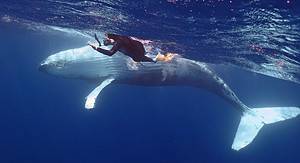People have hunted whales sustainably for thousands of years. The commercial whaling industry, however, exterminated an estimated three million whales by the end of the 20th century, driving some species to near extinction. Even though we’ve found substitutions for every product we once derived from whales, several countries still permit whaling, and yours might be one of them. Read on to learn more about the whaling industry and where and why it is still happening.
Amazing Whale Facts
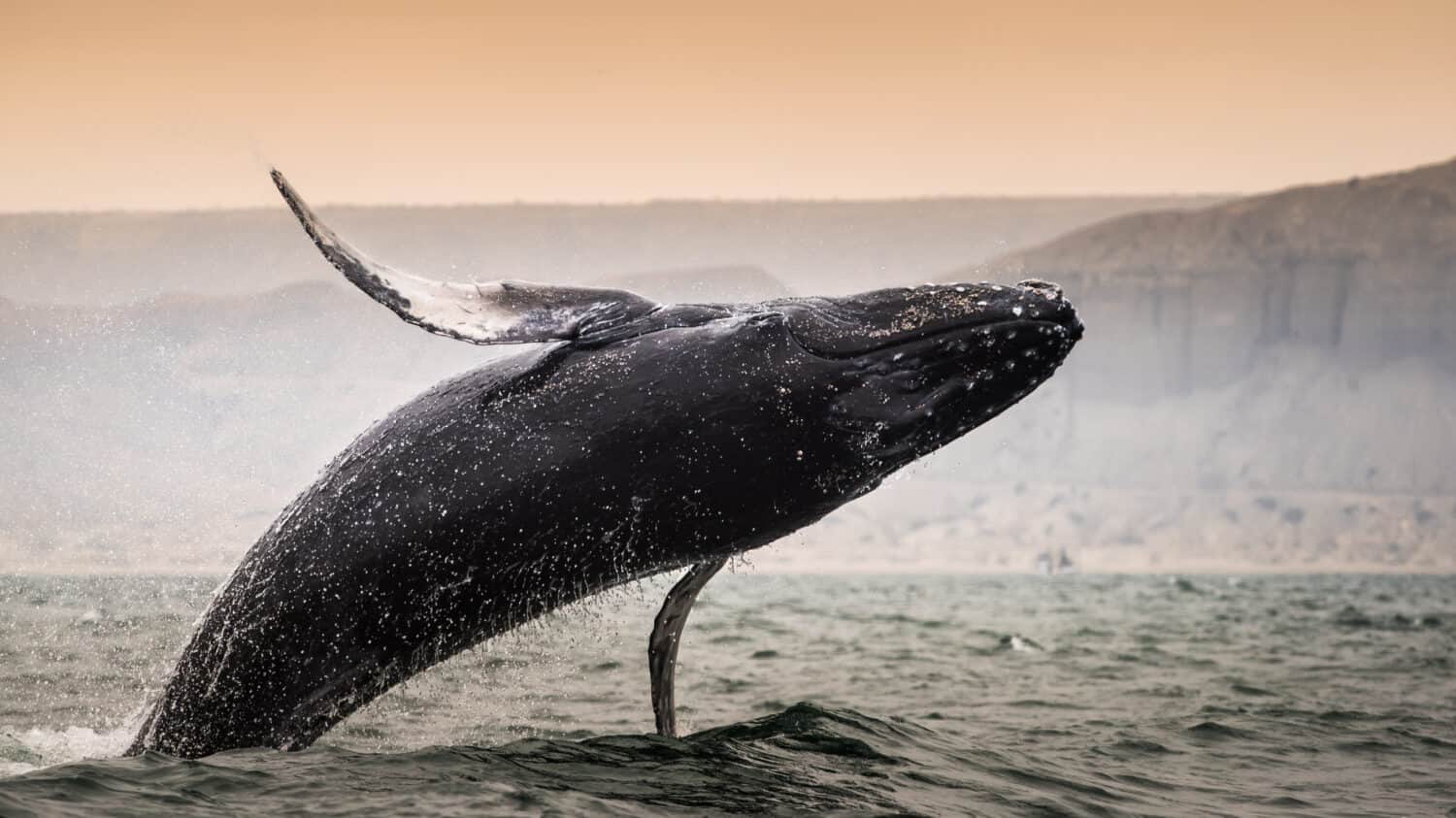
Humpback whales are beautiful creatures. This one was seen breaching off the coast of Peru.
©Christian Vinces/Shutterstock.com
- There are currently 93 species of cetaceans (whales, dolphins, porpoises) in the world. About 34 species are vulnerable or endangered.
- Only a few species make haunting whale songs, including humpbacks and minke whales.
- Whales are among the smartest animals in the world, demonstrating self-awareness, emotional sensitivity, and problem-solving skills.
- The Cuvier’s beaked whale can dive almost two miles deep and stay submerged for over two hours!
- Most cetaceans have teeth, but about 15 whale species strain food through fibrous mouth plates called baleen.
- The world cetacean population dropped from 2.5 million to 1.5 million in the 20th century. The blue whale population dropped from 340,000 to 25,000.
Why Did People Hunt Whales?
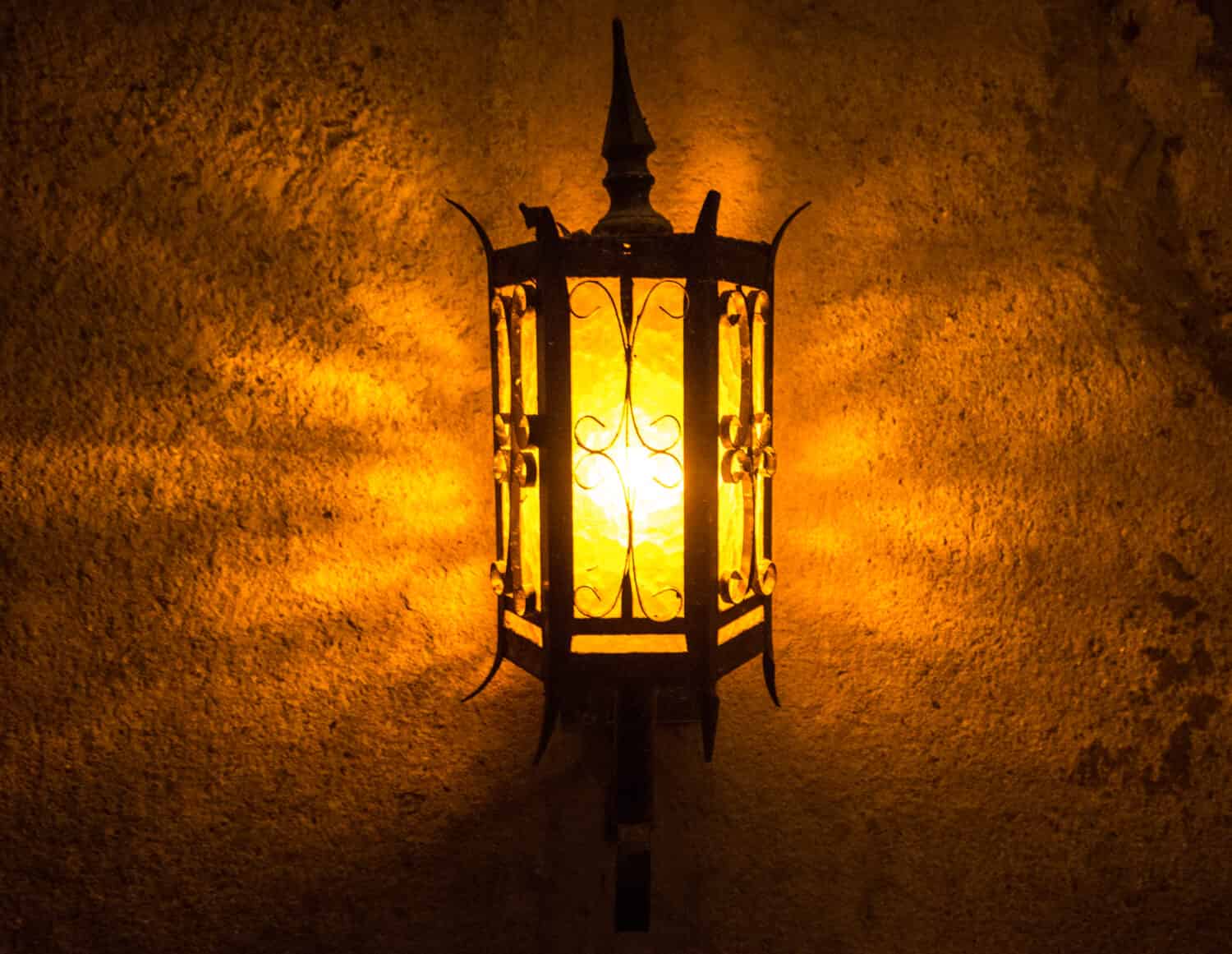
Lantern oil was the most valued product for 18th and 19th-century whalers.
©James Casil/Shutterstock.com
Indigenous Cultures
The Inuit, Scandinavians, and Japanese all hunted whales for centuries and depended on them as an indispensable food source. Tribal peoples used baleen for fishing lines, woven goods, and roofing materials. They carved whale bones into utensils, weapons, and ceremonial items. Ribs could act as a framework for a tent. And of course, the main motivation was the meat, which could feed a village for a long time.
Industrializing Cultures
Through the 19th century, whales were a source of lantern oil, lubricants, and a component of soap and paint. Whalebone corset stays with remarkable properties were a frivolous, but profitable use of baleen. Sperm whales produce two rare and expensive substances. Ambergris is a grey waxy bile secretion that was used in manufacturing perfume. Spermaceti is a high-quality oil in the animal’s head that was used for especially bright-burning lamp oil.
Why Does Whaling Continue Today?
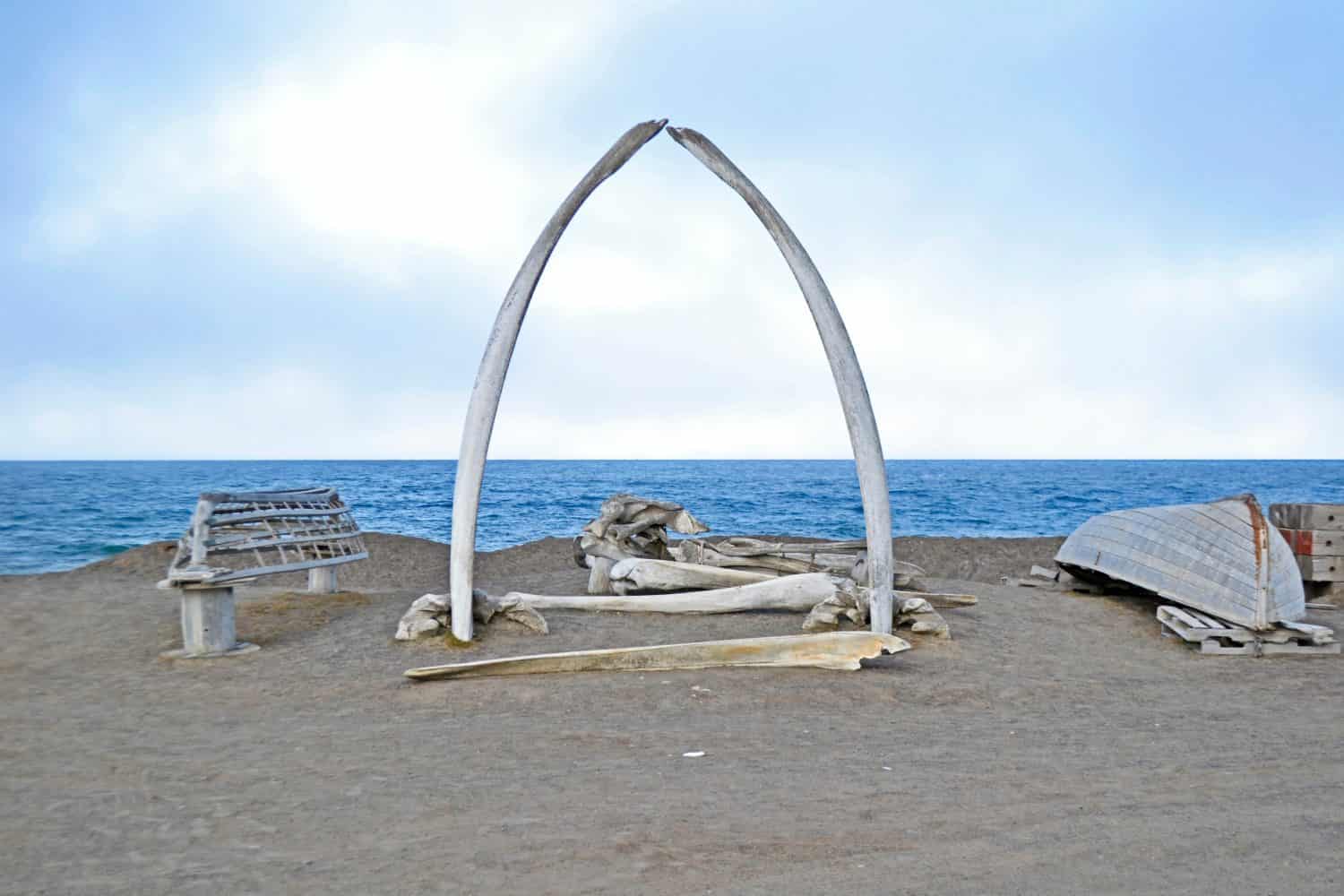
This whalebone arch in Utqiagvik, Alaska symbolizes the local community’s whaling culture.
©JKBay/Shutterstock.com
In today’s world, there is no need to hunt whales. We have found better substitutes for the products once made from them. So why do some countries still hunt them?
- Cultural traditions: Whaling is a deeply ingrained part of the cultures of some Arctic people groups. Seafaring countries view whaling as an aspect of their national identity.
- Food:Whale meat and blubber have high nutritional value. In some countries, whale dishes are traditional, and popular with the older generation and with tourists seeking new experiences.
- Scientific Research: Some countries claim that killing whales to examine their stomach contents is important to understand the species and set appropriate harvesting quotas.
So, what three countries still permit whaling, and which four others “sort of” do?
1. Iceland
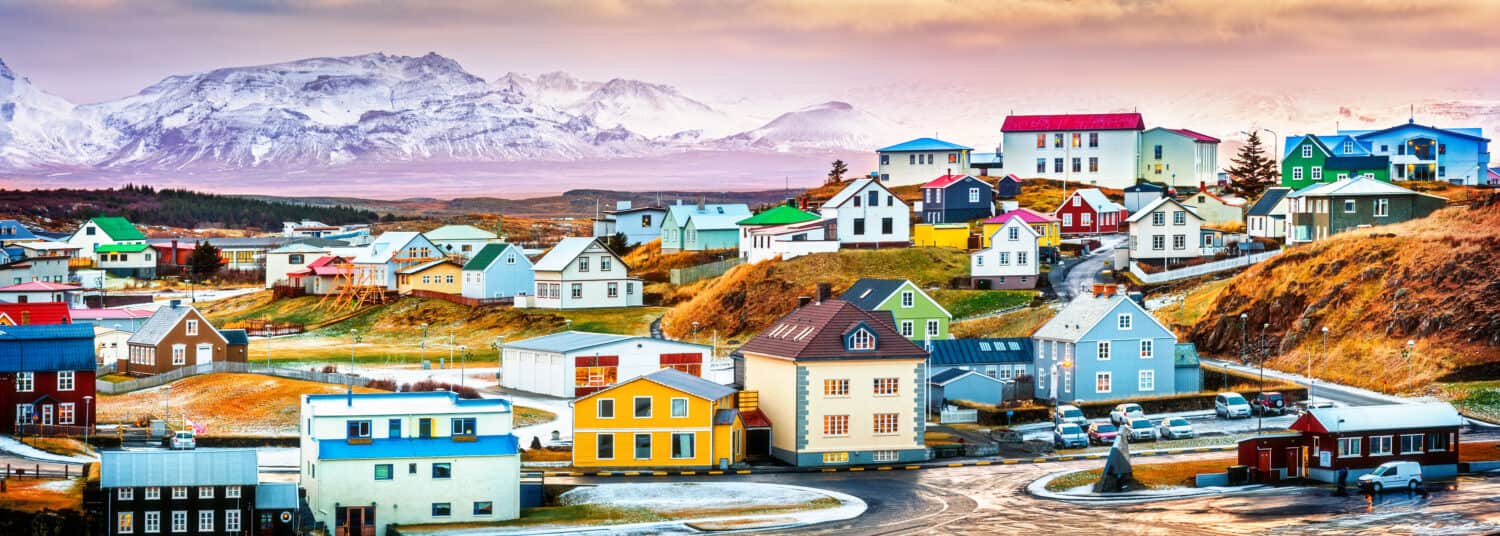
Whaling has been part of Icelandic culture since the founding of the country.
©Mihai_Andritoiu/Shutterstock.com
Iceland has practiced whaling for more than a thousand years. Older people and people in fishing villages see it as another form of fishing. Fishermen also think whales cut down on the fish population, although the number of fish they take is negligible. Local people don’t eat whale meat all that often but serve it in restaurants to meet tourist demand for novel culinary experiences.
Minke whales and fin whales are the main species harvested. Although fin whales are endangered, Iceland kills up to 150 of them a year for export to Japan where they are a delicacy. In 2018 its harvest inadvertently killed two extraordinarily rare hybrids of fin and blue whales.
2. Norway
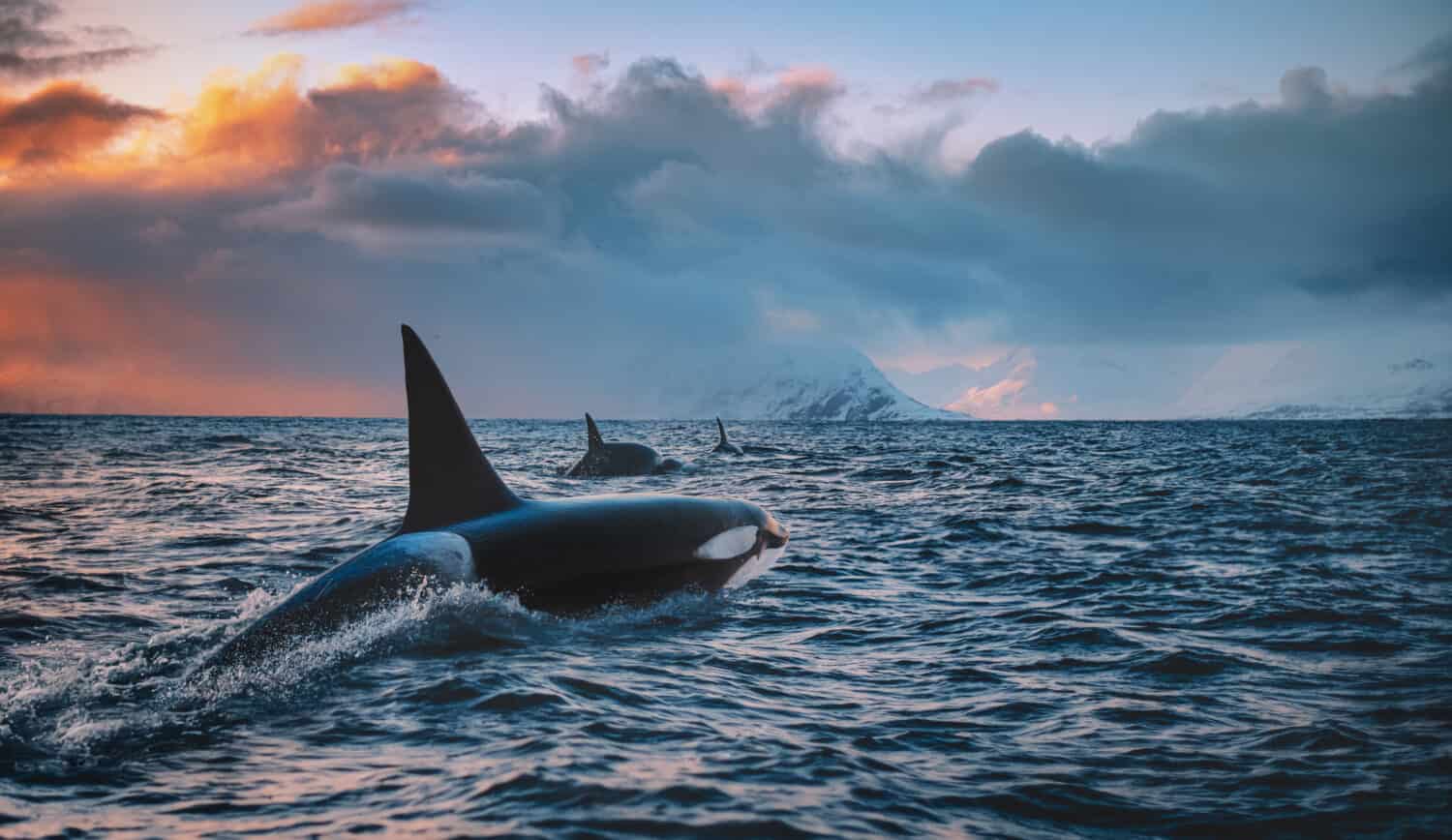
One hunting method used in Norway involved chasing whales into narrow fjords.
©Willyam Bradberry/Shutterstock.com
Of the three whale-hunting nations, Norway kills the most whales, slaughtering between 400 and 600 a year. However, minke whales are the only species hunted. They are not endangered and there are nearly one million of them living in all the world’s oceans.
Norwegian restaurants, supermarkets, fish markets, and cruise ships often offer whale meat. Opinion polls show that while 80% of Norwegians have tried whale, only 7-5% of them eat it more than once a month. The main consumers of whale meat in Norway are older people and tourists. Norway exports much of its whale harvest to Japan, where it is more popular.
3. Japan

This is whale bacon served on lettuce with sake.
©flyingv3/Shutterstock.com
In 2021, Japan harvested 171 minke whales, 187 Bryde’s whales, and 25 sei whales. Although the first two species are not endangered, sei whales are. Japan’s official explanation is that it is taking whales for scientific research, but after the “research” is over, the harvested meat goes into the commercial markets.
Japan imports a significant percentage of the Icelandic and Norwegian harvests to meet its demand. Whale meat has been a traditional food in Japan for centuries. Now it is even possible to buy whale sashimi, steak, and bacon in vending machines! However, since the 1960s it has been declining in popularity. Today 95% of Japanese people rarely or never eat whale and a quarter of the population opposes commercial whaling.
5 “Legal/Illegal” Whaling Countries
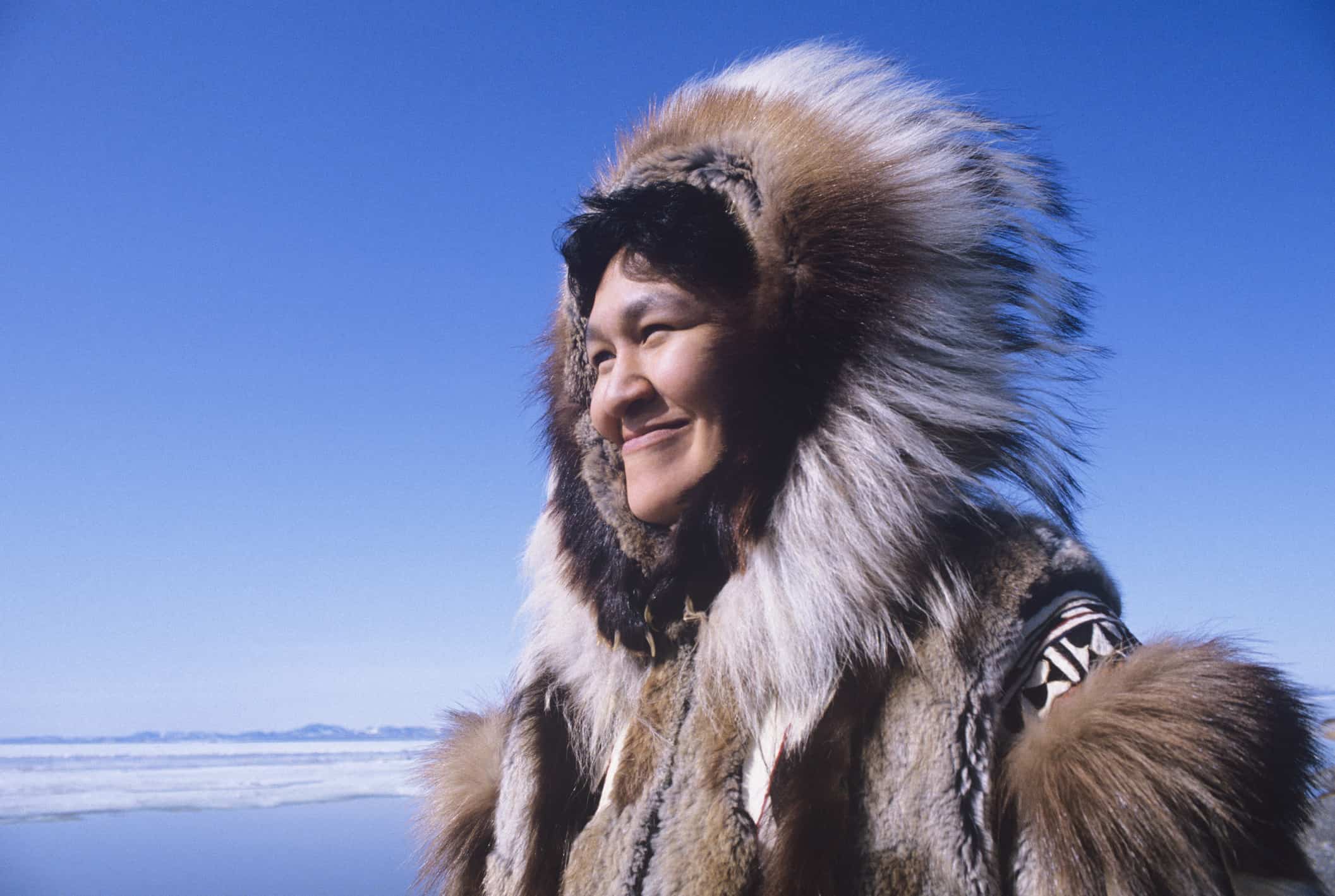
The Inuit people of Alaska, Canada, and Greenland whale for subsistence purposes only.
©iStock.com/IPGGutenbergUKLtd
Five countries of the world officially outlaw commercial whaling but still permit it by tribal communities such as the Inuit, Yupik, and Chukchi. These hunts are subject to strict quotas. Whaling is deeply enmeshed in the history, folklore, lifestyle, and community identity of Arctic peoples. It enables them to sustain themselves rather than being dependent on outside assistance.
The countries that allow these types of hunts are Russia, Denmark (in Greenland), Canada, the United States (in Alaska), and the island of Bequia in St. Vincent and the Grenadines. Americans taught the residents of Bequia to whale in the 19th century. Today they are allowed to take four whales a year using traditional hunting methods.
Ways to Save the Whales
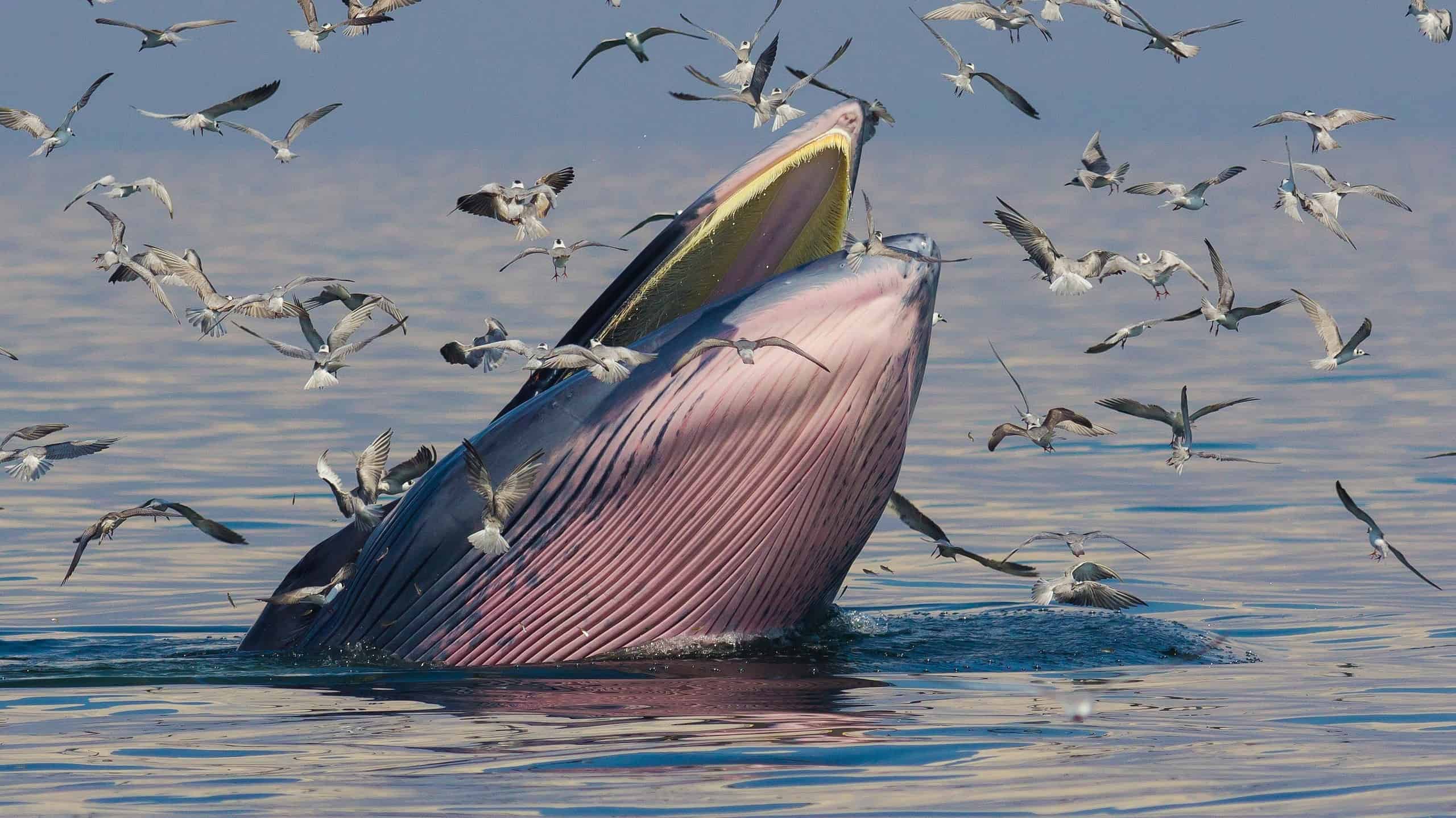
This Bryde’s whale caught its fish dinner at sunset, surrounded by birds looking for a free meal.
©aDam Wildlife/Shutterstock.com
If you would like to help conserve whales and end commercial whaling, here are a few suggestions:
- Recycle: Hunting isn’t the only threat to whales. Pollution, especially plastic waste, is a long-term threat to many marine species. Reduce your use of it and recycle.
- Advocate: Educate yourself, recruit allies, and lobby political leaders to pass beneficial legislation to conserve whales and discourage the industry overseas.
- Tourism: Take part in eco-tourism to see whales and help make them more valuable to national economies alive than dead. When traveling in whaling countries, do not patronize restaurants that have whale on the menu.
- Donate: Contribute money and volunteer time to organizations involved in whale conservation.
- Buy Whales: The whaling industry generates profits of about $31 million a year while conservation groups spend $25 million to save whales. It would be more effective for such groups to purchase whale harvest quotas and leave them unfilled. Urge your favorite conservation organization to explore this idea.
Which of these ideas is something you could get behind? If whales could thank you, they would!
The photo featured at the top of this post is © MyImages - Micha/Shutterstock.com
Thank you for reading! Have some feedback for us? Contact the AZ Animals editorial team.





